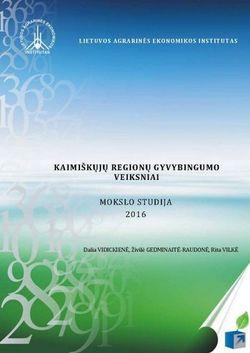
The social and economic developments, in particular those related to the declined agricultural sector’s role in the rural economy, keep changing the lives of rural communities as well as people‘s motivation to live in rural areas. Most of these changes are the components of transition to post-industrial society evolution phase, which result in new success factors for rural vitality, fundamentally different from the success factors, specific to rural industrialization phase. This study aims to identify the most important factors that lead to post-industrial rural vitality and can be used for transforming the industrialized rural settlements, and adopting or evaluating strategic management decisions for rural areas in countries, having stepped onto the post-industrial society‘s evolution stage.
The study is explanatory in its nature and is based on a holistic approach. In order to better disclose the scientific approaches to rural vitality and diversity of their change patterns from public management point of view, identification of the main factors for rural regions‘ vitality was carried out according to the evolutionary, actors and systematic methodologies.
The first chapter presents the evolutionary point of view, based on analysis of society's economic system change and elucidate the factors which caused the vitality of rural industrial society, the relation of these factors towards essential innovations in the main rural population‘s economic activity - agriculture, and the reasons for their decreased effects further. The new important determinants of rural vitality in post-industrial society and conditions for them to arise are discussed. This particular aspect of analysis in changing factors is of top importance for rural policy makers, because if there are causes and patterns for explaining the dominance of one or other factors in certain periods of time, they become the reference point for the formation of rural development policy. The second chapter of the study presents the results of empirical research in accordance to the post-industrial rural vitality factors, identified in the first part of the study, their importance and extent in Lithuania using the existing database of statistical indicators and published special studies. The results empirically confirm the importance of six post-industrial rural vitality success factors in Lithuanian village from the simplest rural development stage to the most complex one. The third chapter of the study is developed using multiple explanatory case study. Carefully selected cases illustrate each evolutionary stage of post-industrial rural development alongside its critical success factors‘ empowerment mechanisms for rural vitality. The five case studies enable to explain more detail how and why the analyzed villages were able to embrace effectively certain post-industrial rural vitality success factors.
Vidickienė, D.; Gedminaitė-Raudonė, Ž.; Vilkė, R. 2016. Kaimiškųjų regionų gyvybingumo veiksniai: Mokslo studija. Vilnius: Lietuvos agrarinės ekonomikos institutas. 99 p. : iliustr., santr. angl. (online) ISBN 978-9955-481-60-7.
